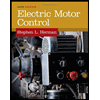Part C. Zener Diode 1. 2. 4. Find a datasheet for a 1N749A Zener Diode. Record the value for reverse breakdown voltage below: 1N749A Reverse Breakdown voltage_ Build the circuit shown in Figure 3 in multisim. Include a voltmeter to measure the voltage across the Diode with the polarity reference shown and an ammeter to measure the current with direction as shown. (Note: for easy wiring, you can right-click on the meters in your circuit, and flip them horizontally.) Operate the supply voltage (Vsupply) between ± 20 V in steps of 1 V (i.e., -20 V, -19 V, -18 V, etc.) and place your results in Table 3 5. Plot the I-V characteristics of the diode using the data from Table 5 of the Lab Report. You should either do a **CLEAR** plot by hand or use a program like EXCEL and paste the results in the space provided V supply 1 ΚΩ www ww Current 1N749A * 510 2 ΚΩ Voltage + Figure 3: Third Circuit Using a Zener Diode 200 Ω
Part C. Zener Diode 1. 2. 4. Find a datasheet for a 1N749A Zener Diode. Record the value for reverse breakdown voltage below: 1N749A Reverse Breakdown voltage_ Build the circuit shown in Figure 3 in multisim. Include a voltmeter to measure the voltage across the Diode with the polarity reference shown and an ammeter to measure the current with direction as shown. (Note: for easy wiring, you can right-click on the meters in your circuit, and flip them horizontally.) Operate the supply voltage (Vsupply) between ± 20 V in steps of 1 V (i.e., -20 V, -19 V, -18 V, etc.) and place your results in Table 3 5. Plot the I-V characteristics of the diode using the data from Table 5 of the Lab Report. You should either do a **CLEAR** plot by hand or use a program like EXCEL and paste the results in the space provided V supply 1 ΚΩ www ww Current 1N749A * 510 2 ΚΩ Voltage + Figure 3: Third Circuit Using a Zener Diode 200 Ω
Chapter59: Motor Startup And Troubleshooting Basics
Section: Chapter Questions
Problem 12SQ: How is a solid-state diode tested? Explain.
Related questions
Question

Transcribed Image Text:Part C. Zener Diode
1.
2.
4.
Find a datasheet for a 1N749A Zener Diode. Record the value for reverse breakdown voltage below:
1N749A Reverse Breakdown voltage_
Build the circuit shown in Figure 3 in multisim. Include a voltmeter to measure the voltage across the Diode
with the polarity reference shown and an ammeter to measure the current with direction as shown. (Note:
for easy wiring, you can right-click on the meters in your circuit, and flip them horizontally.)
Operate the supply voltage (Vsupply) between ± 20 V in steps of 1 V (i.e., -20 V, -19 V, -18 V, etc.) and place
your results in Table 3
5. Plot the I-V characteristics of the diode using the data from Table 5 of the Lab Report. You should either do a
**CLEAR** plot by hand or use a program like EXCEL and paste the results in the space provided
V supply
1 ΚΩ
www
ww
Current 1N749A
*
510
2 ΚΩ
Voltage +
Figure 3: Third Circuit Using a Zener Diode
200 Ω
Expert Solution
This question has been solved!
Explore an expertly crafted, step-by-step solution for a thorough understanding of key concepts.
Step by step
Solved in 2 steps with 1 images

Recommended textbooks for you


Electricity for Refrigeration, Heating, and Air C…
Mechanical Engineering
ISBN:
9781337399128
Author:
Russell E. Smith
Publisher:
Cengage Learning


Electricity for Refrigeration, Heating, and Air C…
Mechanical Engineering
ISBN:
9781337399128
Author:
Russell E. Smith
Publisher:
Cengage Learning